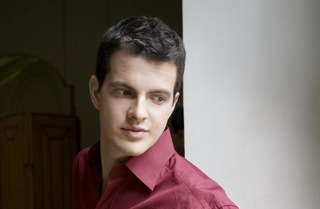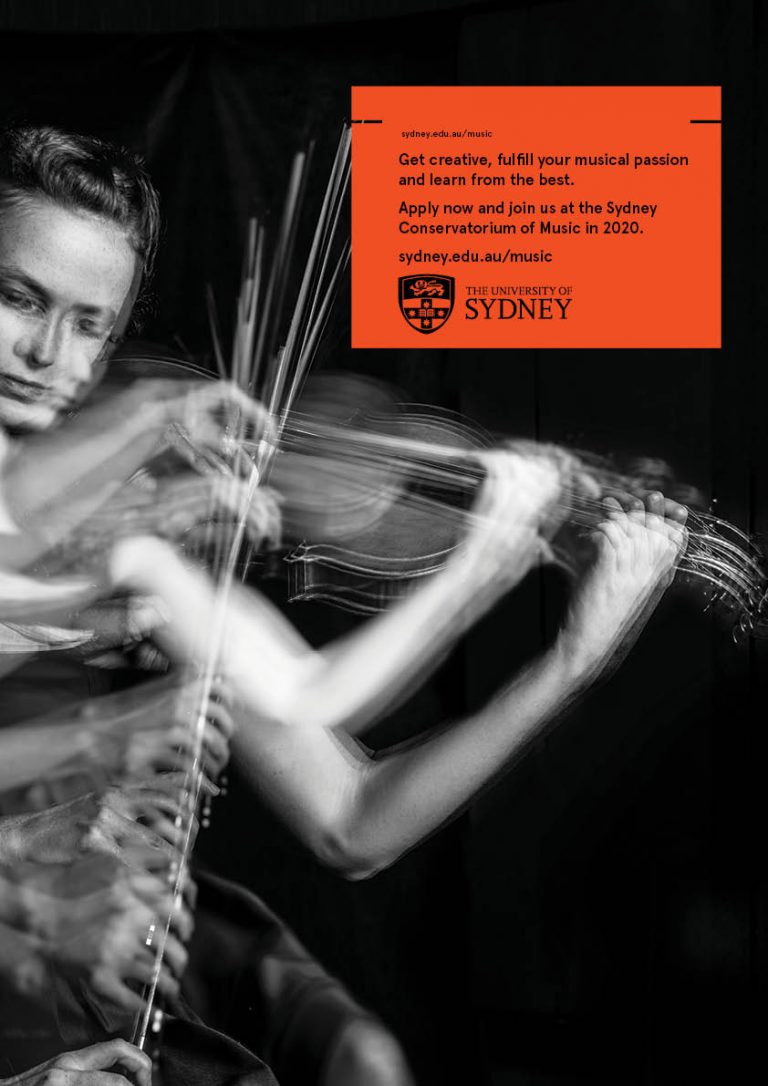Philippe Jaroussky – staying humble and staying fresh

French countertenor Philippe Jaroussky admits to a little apprehension about taking to the stage with the Australian Brandenburg Orchestra this evening, on the opening night of an 8 concert tour to Sydney and Melbourne.
An unusual admission for so seasoned a performer. Yet, it takes a rare strength and assuredness to admit to such vulnerability. Jaroussky is 2 months into a complete break from performing. Apart from these concerts with the ABO, Jaroussky will spend the best part of a year travelling and resting his voice. After that he is looking forward to bunkering down with his teacher in Paris, enjoying the luxury of time to work on repertoire and technique without the demands of a concert schedule.
Speaking with him at the ABO’s headquarters in the Sydney suburb of Edgecliff he admits “I’m a lucky guy. I arrived at a good moment 10 years ago. I did amazing concerts with great orchestras around the world; I can choose the repertoire I want, I can record the music I want. But I didn’t realise the stress I was under and I didn’t want to want to stop because of vocal troubles. I was almost 35, with a 15 year career behind me and I thought I need to step back, to refresh the technique and to re-build.”
He continues: ” As a singer you have to remember that your voice is not eternal. Even with a good technique you never know how long you can enjoy your voice – and the voice is changing so much, with the body. I know that my time now – between 30 and 40 is when I can use my voice the best because maturity and flexibility are at a peak. That is also why I prefer to keep a distance. I don’t want to wake up at 50 or 60 and say I just sang all my life and did nothing else.”
Resuming his training in preparation for this Australian tour, Jaroussky is already confident of having made the right decision. ” I can really feel deeply it was a good choice” he says. ” It is a very precise machine, the voice. You are singing with all your body and when there are the demands of concerts, radio broadcasts and recordings you push yourself. For example when you tour with an orchestra in Europe, you’re changing cities each two days, the travel is exhausting, there are new concert halls and other performers to work with – I’m a solid guy and I’m happy to do it but it is tiring. So I say to myself -‘Let’s be quiet, refresh and build again.’ ”
Jaroussky’s strategy is set and he has firm plans for his sabbatical. “It is so nice to step back, I think I will take a 6-8 month break each 5 years, to really consolidate. Then there is a different part of my job as a Baroque singer, and that is to look for scores. I need to have time to research. It’s fantastic to be in a library amongst books, to be in direct contact with these manuscripts. His eyes shining, he confides “It’s very exciting to know that you’re the first person in 300 years to sing an aria!”
Likewise, Sydney audiences will be amongst the first in 300 years to hear some rare arias by Nicola Porpora, (1686-1768), a Neapolitan composer, contemporary and rival of Handel, JS Bach and D Scarlatti. His formidable reputation and stellar career as teacher and composer of opera has been unfairly forgotten. He taught several castrati, one of them, Farinelli, who made his debut with a Porpora serenata; Porpora travelled widely in Europe to London, Germany and Austria; like Vivaldi before him, he spent several years teaching at the Ospedale della Pietà in Venice.
For Jaroussky, the rewards of uncovering lost treasures are paramount. “It’s nice when someone says I love your voice; but if someone says to me after a concert that they really discovered a composer or a beautiful aria I’m very happy about that because it’s a part of what I can give as an interpreter. I love to find new repertoire, the audience loves it and for my part” – he searches for the perfect words – ” I am defending music”.
Jaroussky has a glittering career that stretches back for over a decade; he has performed with the likes of Les Arts Florissants, Les Musiciens du Louvre, L’Arpeggiata, and Europa Galante, and conductors William Christie, Marc Minkowski, René Jacobs, and Fabio Biondi. He has shared the stage with Cecilia Bartoli and Les Arts Florissants as Sesto for concert performances of Handel’s Giulio Cesare. He has won the highest of awards for his recordings, amongst them, a Diapason d’Or, a Choc from the Magazine Monde de la Musique, the Timbre de Platine from Opera International, and a Gramophone Award.
The phenomenon of the counter-tenor faded after early Classical times, and with it, its body of Baroque and early Classical repertoire. The style has enjoyed a revival in the late 20th and 21st centuries, mostly from a resurgence of interest in Baroque music. For modern counter-tenors the staple repertoire derives from ages past. Now emerging are composers who are writing new works for the counter-tenor.
Jaroussky says he receives more requests to collaborate on new commissions than he can accommodate. ” Last year I performed the title role in an opera which was created for me about the life of Caravaggio. It was a big change because the writing was very intense, very modern, nothing was totally natural for me vocally. I learnt a lot about my voice by singing in a different style. As counter-tenors we need to escape from Baroque repertoire and develop different techniques – and it’s very pleasant to have the composer on the phone, to have the possibility to explain myself, my voice, what I can and cannot do and to see at the end the results. Most of the time it is a risk to accept a project like this – to commit to music like this before it is written – but it is nice to be surprised.”
One of these partners was contemporary French composer Suzanne Giraud (b 1958). A graduate of the Strasbourg and Paris Conservatoires, Caravaggio is her second opera, written during her residency at the Villa Medici in Rome. Another, Marc- Andre Dalbavie, also a graduate of the Paris Conservatoire, set the sonnets of Louise Labbé to music, which Jaroussky sang with the Orchestre National de Lyon conducted by Thierry Fischer and with the Orchestre de Paris and Christoph Eschenbach.
This is music of an ilk that is yet to be performed in Sydney. Curiosity abounds. “Most of the time they use the counter-tenor as a link with the past. The writing can also be derived from the Baroque era – that’s why with Caravaggio for example – Suzanne Giraud chose the counter-tenor to speak about the sexuality of Caravaggio who was quite crazy, but also to show the light in his painting through the voice. My voice has a very light sweet colour and I had to find new tones to express the darker side of his character.”
“Many composers are attracted by the colour of this voice and love to play with androgyny. I don’t like it so much because for me the counter-tenor is a male voice. But it’s true that if they are telling a modern story they use this voice to speak about androgyny. It is very important to embrace these projects because it is the repertoire of tomorrow.”
A generous dollop of mischief swaggers into his voice. “I also like the fact that even with my voice, I can play bad boys. Why not?!!” he demands.” I can have this distance between my voice and what I act. When I sing Nerone in Poppea it’s fun to have this boyish colour yet have this awful behaviour on stage!”
In a profession which suffers a particular dearth of role models, the female voice is not off limits. ” It’s very useful that the castrato repertoire doesn’t belong to the counter-tenor only and we see all these fantastic sopranos and mezzo sopranos who perform this music beautifully. As a counter -tenor you can develop the colours of the mezzo-soprano and the soprano. We need these two voices to understand how it could sound. A woman’s timbre could give dramatic power and a counter-tenor could create a boyish colour and I think we need both.”
As for role models, Cecilia Bartoli sits at the peak. ” In music – there is ‘before Cecilia’ and ‘after Cecilia’. Her virtuosity is innate, but expressing the meaning of the text has changed with her, with Anne Sophie von Otter and Joyce di Donato.”
Jaroussky makes another surprising admission. “As a counter-tenor you have to stay very humble. You have to remember that you’re not singing like a castrato. You’re breathing more and taking faster tempi at the expense of sound and ornamentation. It was a very impressive part of their art that sometimes castrati were not breathing for 1- 2 minutes, making huge cadenzas. ”
He continues “Things have changed too with tempi. If you really want to perform ornamentation from the period you have to take slower tempi. In modern times we’re rushing and the perception of tempo has changed. They breathed differently – they took things slower, but with huge and very open sound. Maybe as counter-tenors or as women singers we aim for brilliance by taking quicker tempi. Of course we have an idea of the range and the flexibility of the voices because of the scores. But I have no idea of how it was sounding. It is all a part of the mystery that attracts the audience.”
The brutally honest yet gentle conversation closed with one final self-revelation: ” As a singer you cannot lie. People can feel if you’re here for yourself or for something else. As a musician you have to be really involved and totally taken by music.”
Shamistha de Soysa for SoundsLikeSydney©
Click here for concert information





One Comment